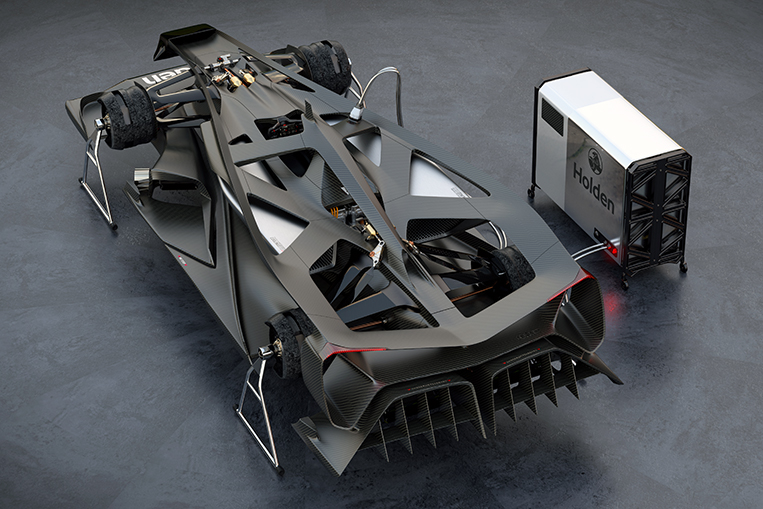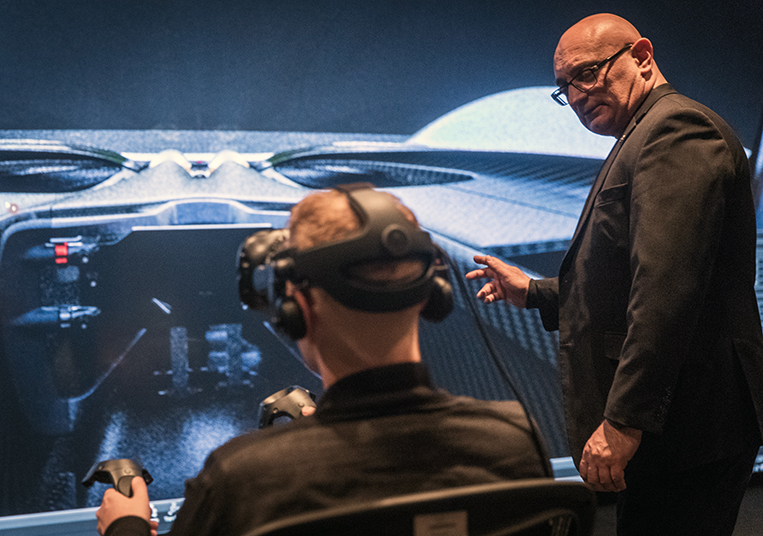
Holden is best known by people living and driving in Australia, but the household name from down under is also heavily involved in the design and the development of other cars in the General Motors group, such as the Colorado pickup that we recently drove through the Australian outback, (and which is being sold with a Chevrolet badge on our shores). To showcase the abilities of the GM Holden Design team in Melbourne, the firm has come up with a spectacular-looking concept for a time-attack racer that also honors the 50th anniversary of Holden’s first win at the infamous Mount Panorama Circuit in Bathurst.

The Holden Time Attack concept is not a traditional concept car that you can physically touch, drive or admire at a trade show, but a virtual one, designed and developed in-house using sophisticated simulation technology. This approach is becoming ever more used in the automobile industry as it allows engineers to try out and develop new ideas and vehicles at a faster pace and reduced cost. According to GM Holden design director Richard Ferlazzo, the Time Attack concept acts like an advert for the skills of the Advanced Vehicle Development team employed by the firm, and it represents a feasible idea for a futuristic race car, albeit one that would require an incredibly brave and resilient pilot.

What looks like just a shiny drawing of a sleek racing machine is actually a fully thought-out car, complete with mind-boggling performance figures and features. It currently lives inside a computer, but building a real-life version at some point is at least plausible, according to Ferlazzo. Weighing (virtually speaking) just 900kg and sporting a reconfigurable Graphene Hybrid Power Pack, the concept uses four axial flux permanent-magnet electric motors that give it a combined power output of 1,000kW or 1,340hp. Total torque stands at 3,240Nm, but four three-speed planetary automatic gearboxes can unleash up to 9,620Nm total axle torque at launch.


That should be enough to rocket this space-age racer from zero to 100km/h in a mere 1.25 seconds, on the way to a top speed of 480km/h. Carbon hydraulic disc brakes are onboard to slow things down again, while regenerative braking offers up to 2.0G of deceleration force. Chassis and body consist almost entirely of carbon fiber, with even the wheels and the double wishbones being made of the lightweight material. One of the most amazing features of this car is hiding on the underside of it, and it seems that someone at Holden must have been a fan (no pun intended) of the Brabham BT46 Formula 1 car from days gone by.

Yes, this concept vehicle is actually a fan car. Four individually controllable cyclo-gyro fans with actuated blades that can spin at up to 50,000rpm are blasting air through four Venturi tunnels underneath the car to literally suck it onto the ground. Rubber skirts prevent too much air from escaping, while a huge hydraulically actuated rear wing adds even more downforce. All this aero madness is said to be good for a mind-bending maximum lateral g-force of 6.5G. The driver, if still conscious, can enjoy this cornering orgy through the interactive visor of his augmented-reality helmet, where real-time information can be shown and graphics (such as the racing line) can be overlaid.

You might think that all of this stuff is just science fiction, but the developers and designers at Holden would beg to differ. We actually visited the very facility where this vehicle was thought up during a recent trip to Australia with Chevrolet Philippines. Having met Ferlazzo and having seen the design office and its capabilities, we believe this is a serious digital development hub for trying out new ideas we may well be seeing in road cars in the near future.

It’s also not as if Holden hasn’t done this sort of thing before. In fact, the company’s very first concept car, the Hurricane, boasted a number of ideas and technologies that must have seemed like pure Jetsons stuff when the car was first presented to the world back in 1969. Now sitting proudly at the reception area of the Holden headquarters in Melbourne, the Hurricane even had a rearview camera and a navigation system—among other things that were ahead of their time. Hopefully, at some point in the not-too-distant future, a real-life version of the Time Attack concept will park next to it. Then it would definitely be time for another trip down under.











Comments